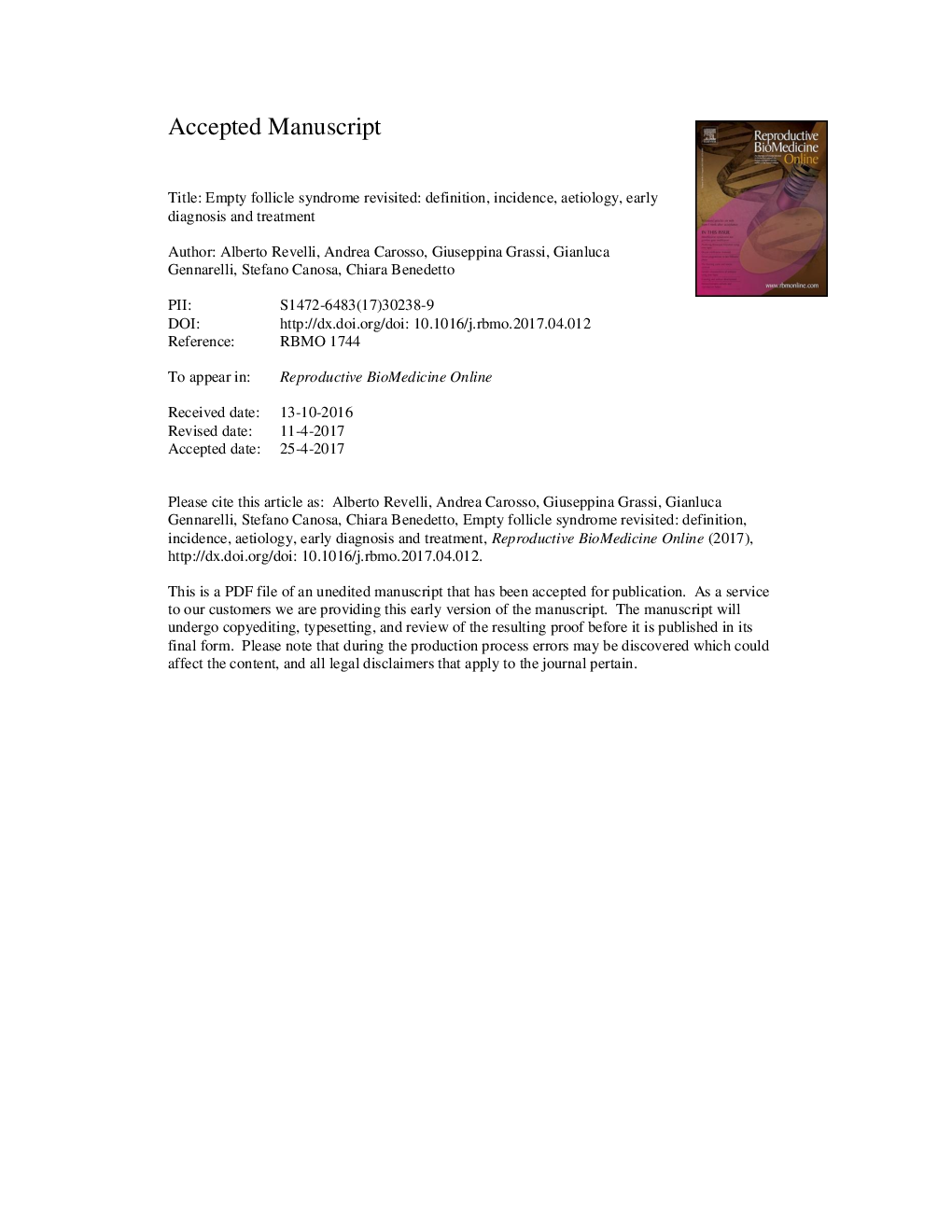| Article ID | Journal | Published Year | Pages | File Type |
|---|---|---|---|---|
| 5696682 | Reproductive BioMedicine Online | 2017 | 24 Pages |
Abstract
In this review, the definition, incidence and possible causes of empty follicle syndrome (EFS), including molecular mechanisms that may underlie the syndrome, are discussed, along with prevention and treatment options. EFS is the complete failure to retrieve oocytes after ovarian stimulation, despite apparently normal follicle development and adequate follicular steroidogenesis. Two variants of EFS have been described: the 'genuine' form (gEFS), which occurs in the presence of adequate circulating HCG levels at the time of oocyte aspiration, and the 'false' form (f-EFS), which is associated with circulating HCG below a critical threshold. Heterogeneous HCG concentration thresholds, however, have been used to define gEFS, and to date no standardization exist. The situation is unclear when GnRH-analogues are used for ovulation trigger, as the threshold circulating LH and progesterone levels used to define EFS as 'genuine' are not established. The cause of fEFS has been clearly identified as an error in HCG administration at the time of ovulation trigger; in contrast, the cause of gEFS is still unclear, although some pathogenetic hypotheses have been proposed. Optimal treatment and prognosis of these patients are still poorly understood. Large, systematic multi-centre studies are needed to increase the understanding of EFS.
Related Topics
Health Sciences
Medicine and Dentistry
Obstetrics, Gynecology and Women's Health
Authors
Alberto Revelli, Andrea Carosso, Giuseppina Grassi, Gianluca Gennarelli, Stefano Canosa, Chiara Benedetto,
